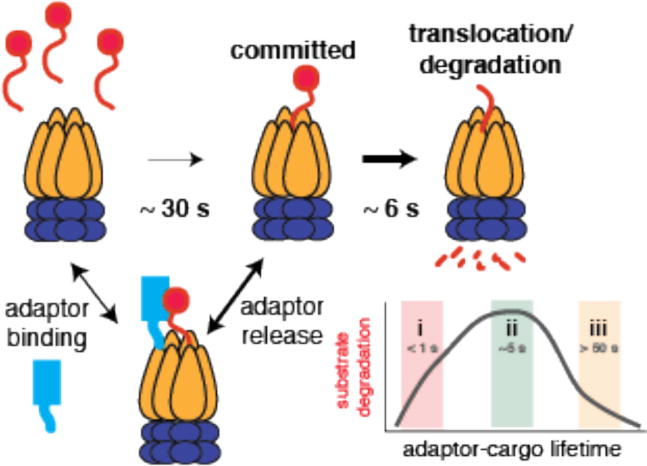Figure 5.

Substrate degradation by ClpXP is rate-limited by the commitment step, where the protease initially engages a target, rather than the unfolding or translocation steps, which are relatively fast. Commitment is estimated to be ~ 30 seconds for degradation of tagged GFP by ClpXP (Cordova, et al. Cell 2014). Tethering adaptors (like SspB and RcdA) enhance degradation of substrate but the strength of the interaction between the adaptor and substrate must be tuned to the commitment time for the protease (regime ii). Poor adaptor-cargo binding results in failure to deliver (regime i) but binding too tightly (regime iii) hinders substrate release during the commitment step for protease engagement of the substrate.
